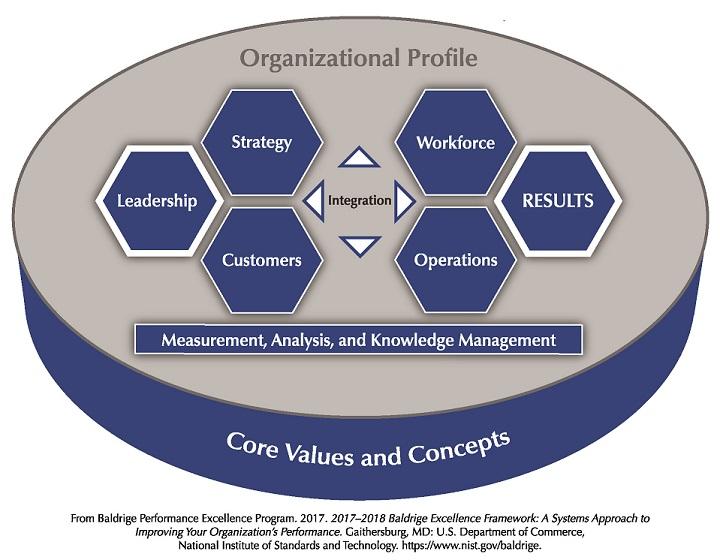Blogrige
The Official Baldrige Blog

Ready to assess your organization’s performance using an approach based on the Baldrige Excellence Framework (which includes the Criteria for Performance Excellence)? It’s easy to get started!
Here are seven ways any organization (large, mid-size, and relatively small, and in business, nonprofit, health care, or education sectors alike) can begin a Baldrige-based self-assessment:
1. Learn what your employees and senior leaders think. Distribute copies of the Are We Making Progress? and Are We Making Progress as Leaders? questionnaires, which are available as PDF files for free downloading from our Web site. Both surveys contain 40 questions organized by the seven categories of the Baldrige Criteria for Performance Excellence framework. Having your leadership team complete the latter survey and your workforce members complete the former—and then comparing the groups’ responses can help you check your progress on organizational goals and improve communication between senior leaders and workforce members.
2. Identify gaps in your understanding of your organization and compare your organization with others using easyInsight: Take a First Step toward a Baldrige Self-Assessment. This assessment tool is based on the Organizational Profile.
3. Complete the Organizational Profile, two sets of questions about your organization’s characteristics (environment and relationships) and strategic situation (competitive environment, strategic context, and performance improvement system). Have the members of your leadership team answer the questions. If you identify topics for which you have conflicting, little, or no information, you can use these topics for action planning. For many organizations, this approach serves as a first Baldrige self-assessment. As a bonus, since this profile consists of the first two items of the Criteria for Performance Excellence (known as P.1 and P.2), you’ll have begun a Baldrige Award application when you’re done!
4. Use the full set of Criteria questions as a personal guide to everything that is important in leading your organization. You may discover blind spots that you have not considered or areas where you should place additional emphasis.
5. Review the scoring guidelines (in the booklet). They help you assess your organizational maturity, especially when used in conjunction with “Steps toward Mature Processes” and “From Fighting Fires to Innovation: An Analogy for Learning.”
6. Do a self-assessment of one Criteria category in which you know you need improvement. Answer the individual questions in the category yourself or with leadership team colleagues, referring to the item notes and the Category and Item Commentary (available as a PDF that may be downloaded for free from the Baldrige Performance Excellence Program's website) to guide your thoughts. Then assess your strengths and opportunities for improvement, and develop action plans. Remember to build on your strengths as well as tackle your improvement opportunities. Be aware, though, that this kind of assessment does not reveal key linkages between your chosen category and the other Criteria items, and you may lose the systems perspective embodied in the seven integrated Criteria categories.
7. Have your leadership team assess your organization. At a retreat, have your leadership team develop responses to the seven Criteria categories, and record the responses. Then assess your strengths and opportunities for improvement, and develop action plans.
By taking a Baldrige-based approach to self-assessment, your organization—no matter your sector or size—will be on the way to improvement and excellence.
Related blog posts: “Baldrige Criteria: Seven Ways to Learn More” and “Baldrige Self-Assessment: Seven Steps for a Full Examination.”
About the author
Related Posts
Comments
- Reply





